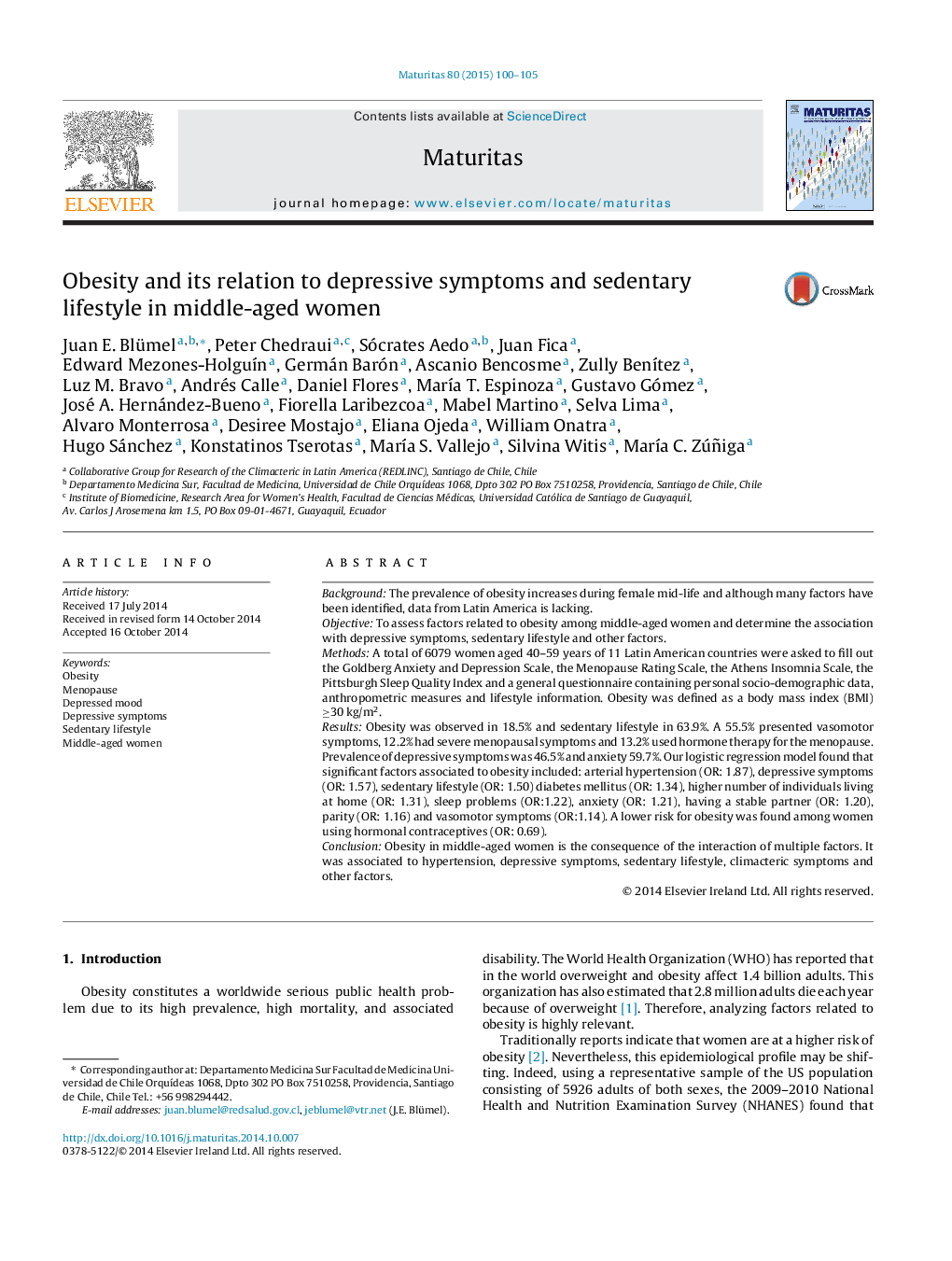| کد مقاله | کد نشریه | سال انتشار | مقاله انگلیسی | نسخه تمام متن |
|---|---|---|---|---|
| 1917146 | 1047880 | 2015 | 6 صفحه PDF | دانلود رایگان |
• We assessed factors related to obesity in middle-aged women.
• Women fill out the Goldberg Anxiety and Depression Scale, the Menopause Rating Scale, the Athens Insomnia Scale, the Pittsburgh Sleep Quality Index and a general questionnaire.
• Obesity in mid-aged women was associated to depressive symptoms, sedentarism, hypertension and menopausal symptoms.
BackgroundThe prevalence of obesity increases during female mid-life and although many factors have been identified, data from Latin America is lacking.ObjectiveTo assess factors related to obesity among middle-aged women and determine the association with depressive symptoms, sedentary lifestyle and other factors.MethodsA total of 6079 women aged 40–59 years of 11 Latin American countries were asked to fill out the Goldberg Anxiety and Depression Scale, the Menopause Rating Scale, the Athens Insomnia Scale, the Pittsburgh Sleep Quality Index and a general questionnaire containing personal socio-demographic data, anthropometric measures and lifestyle information. Obesity was defined as a body mass index (BMI) ≥30 kg/m2.ResultsObesity was observed in 18.5% and sedentary lifestyle in 63.9%. A 55.5% presented vasomotor symptoms, 12.2% had severe menopausal symptoms and 13.2% used hormone therapy for the menopause. Prevalence of depressive symptoms was 46.5% and anxiety 59.7%. Our logistic regression model found that significant factors associated to obesity included: arterial hypertension (OR: 1.87), depressive symptoms (OR: 1.57), sedentary lifestyle (OR: 1.50) diabetes mellitus (OR: 1.34), higher number of individuals living at home (OR: 1.31), sleep problems (OR:1.22), anxiety (OR: 1.21), having a stable partner (OR: 1.20), parity (OR: 1.16) and vasomotor symptoms (OR:1.14). A lower risk for obesity was found among women using hormonal contraceptives (OR: 0.69).ConclusionObesity in middle-aged women is the consequence of the interaction of multiple factors. It was associated to hypertension, depressive symptoms, sedentary lifestyle, climacteric symptoms and other factors.
Journal: Maturitas - Volume 80, Issue 1, January 2015, Pages 100–105
